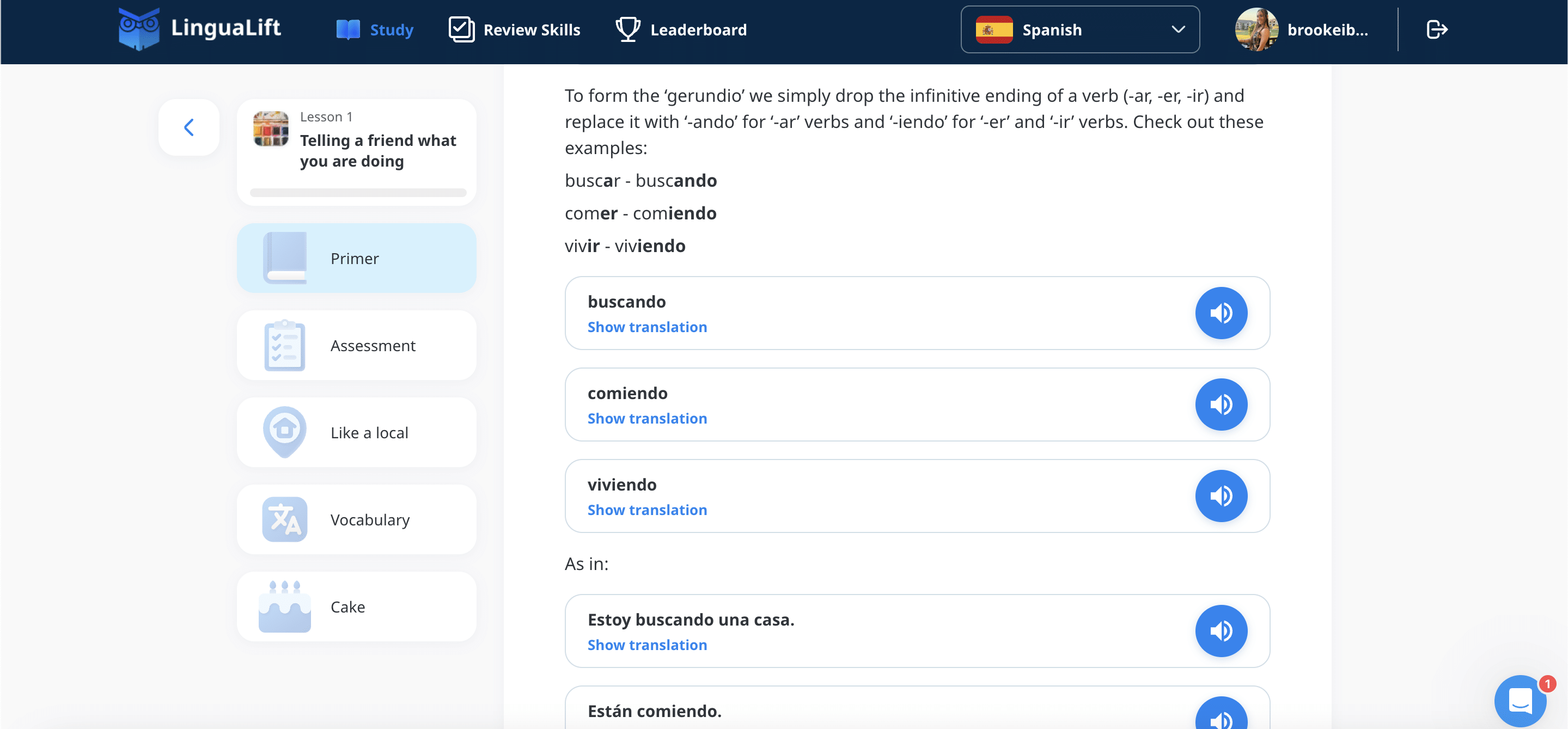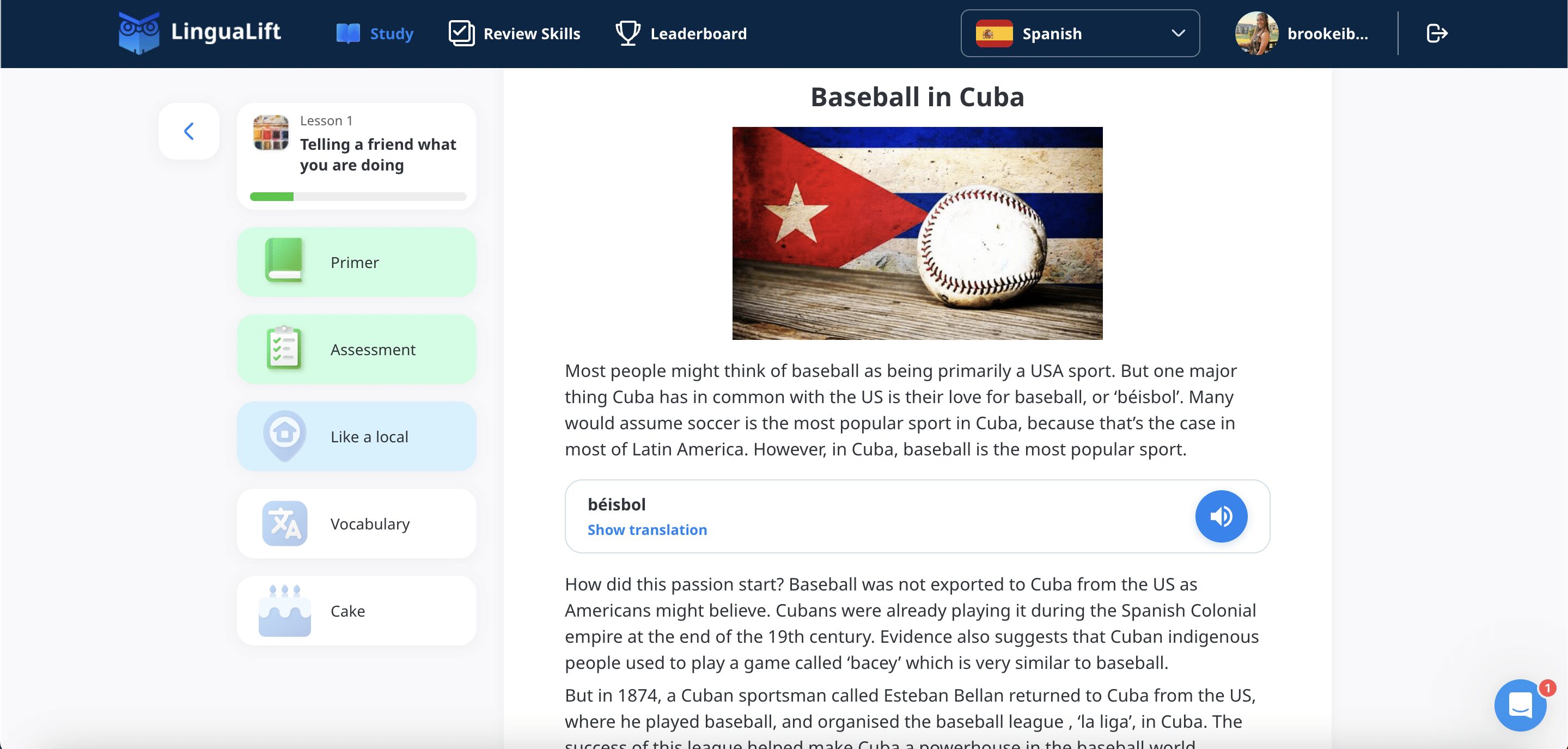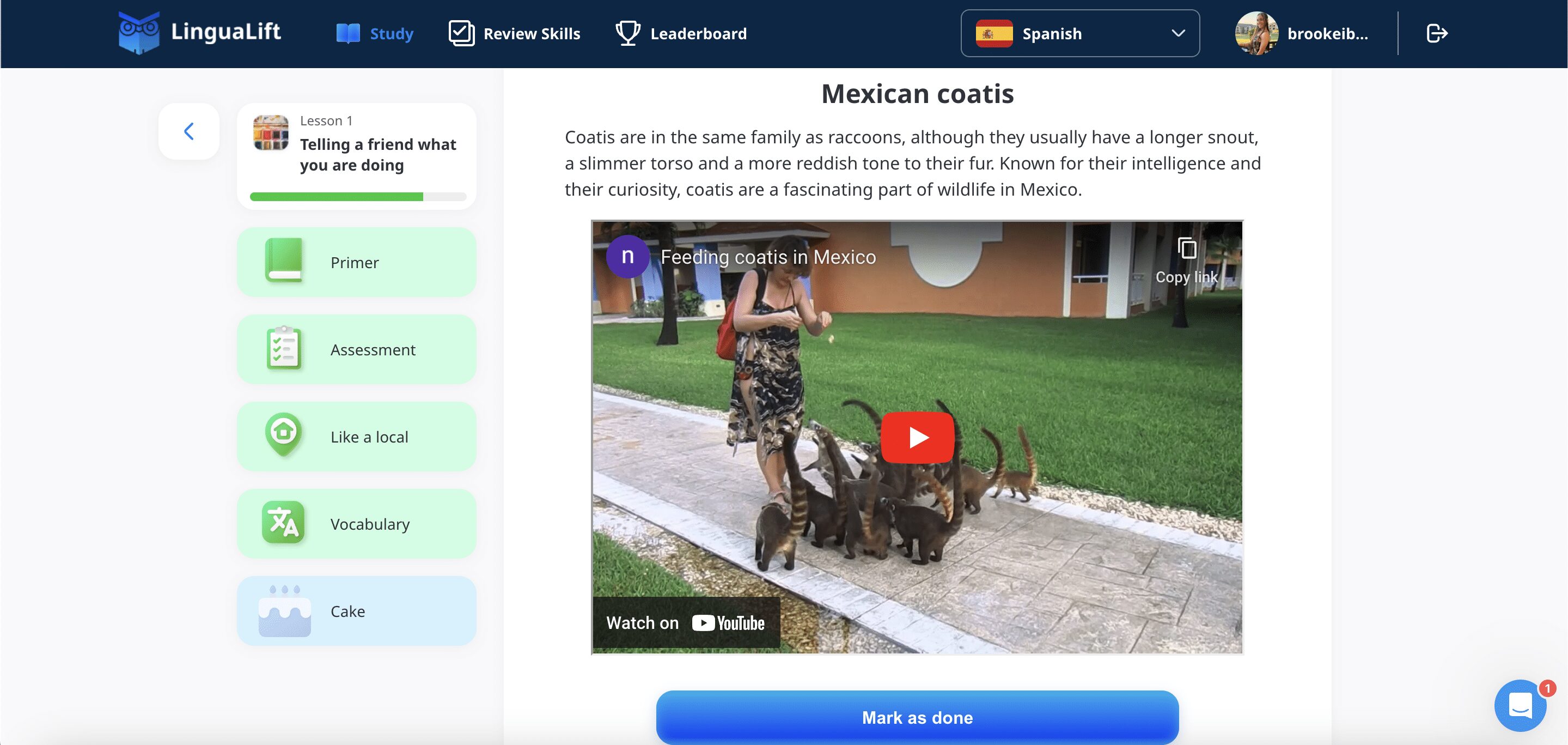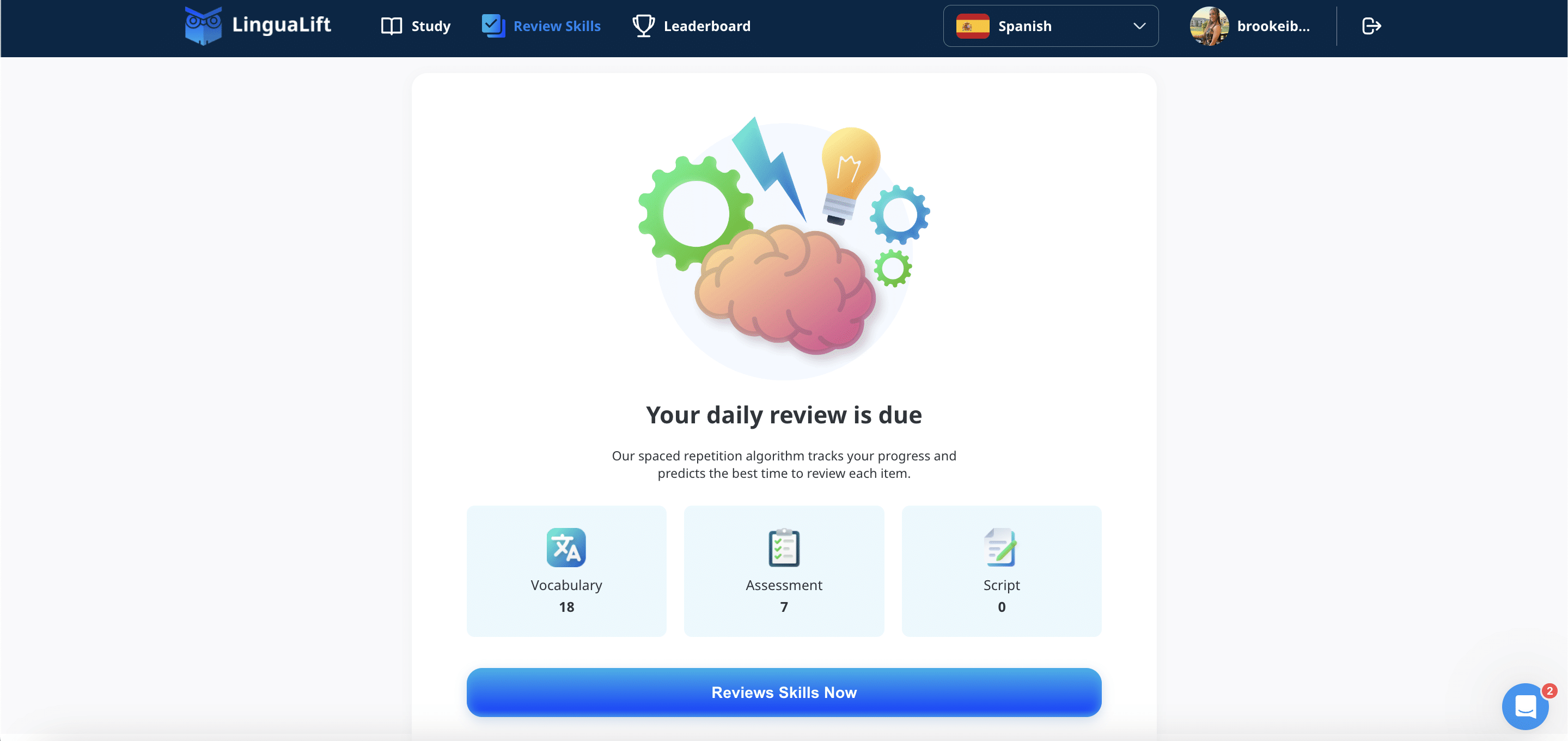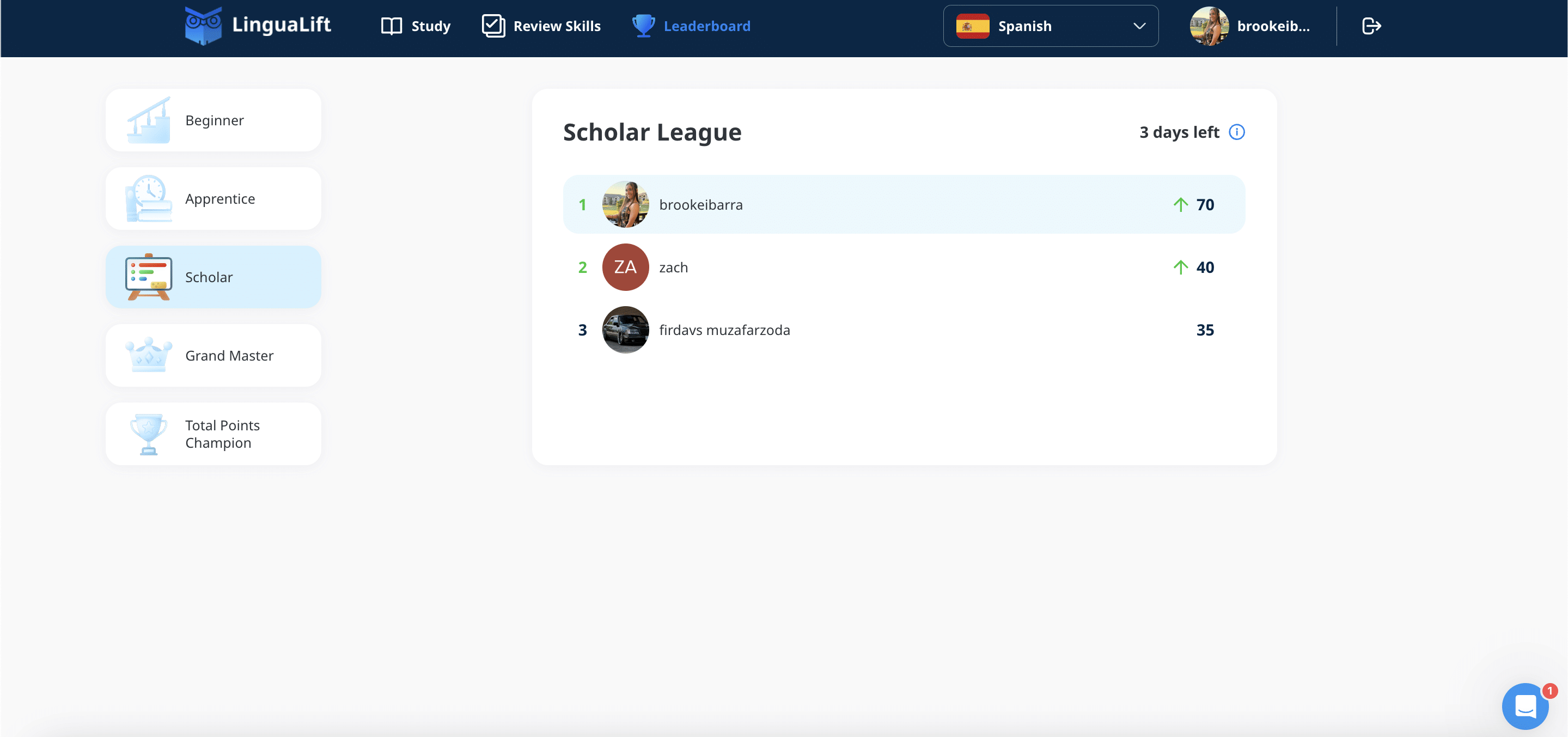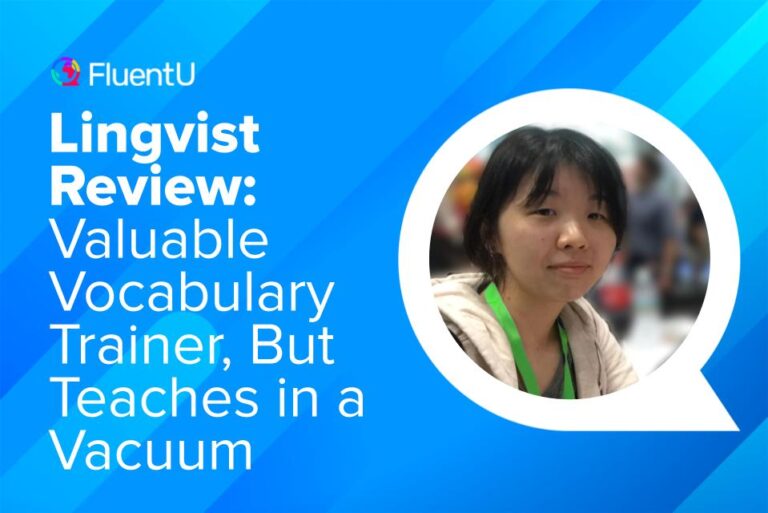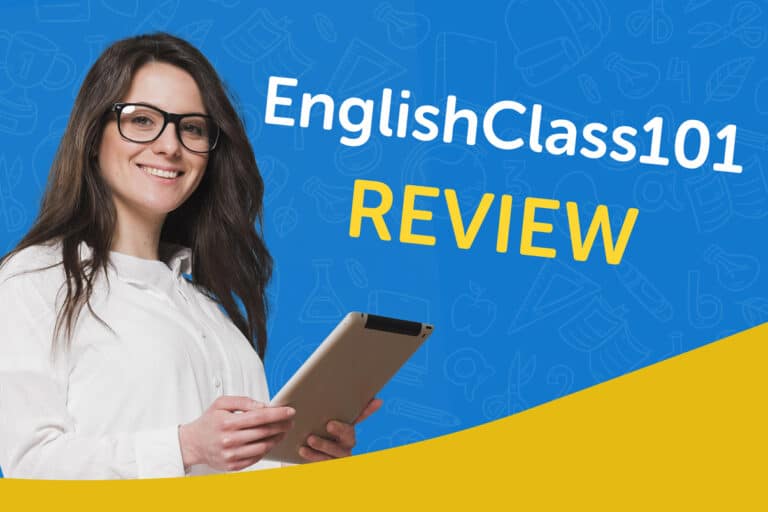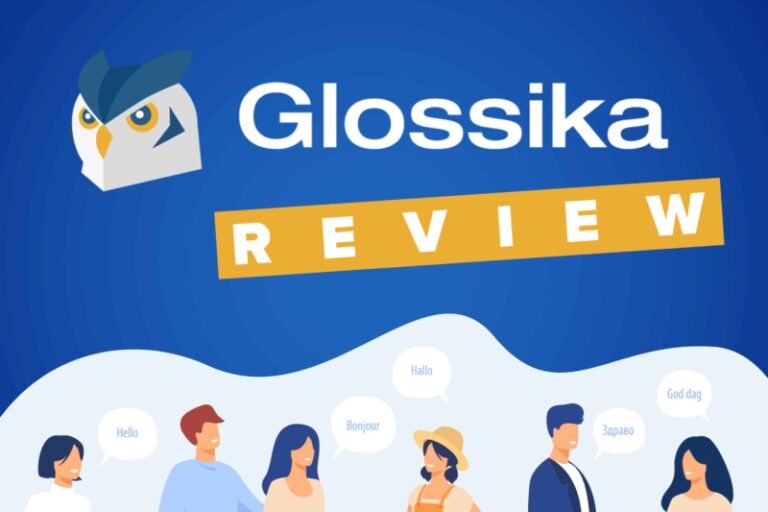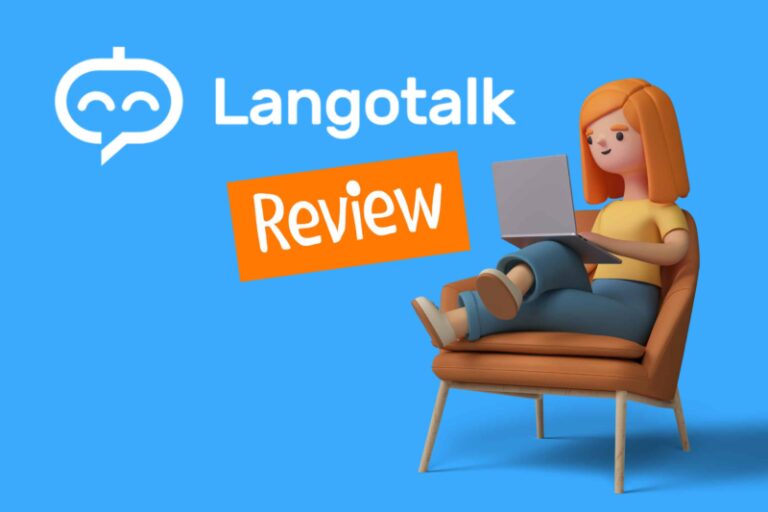LinguaLift Review: High-quality Lessons for Beginners Only
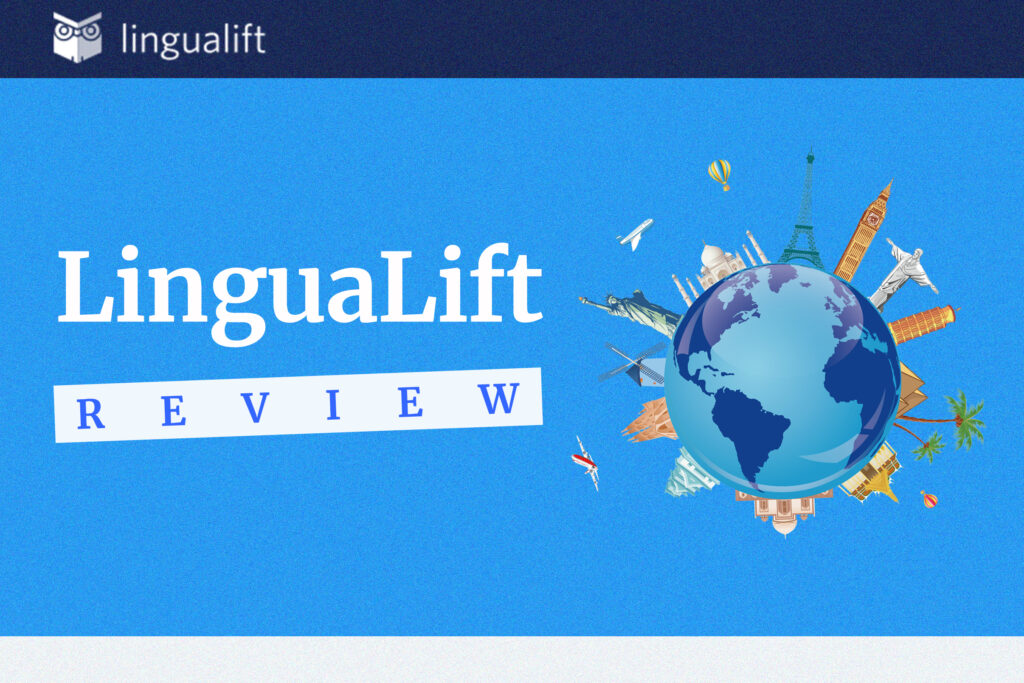
Wouldn’t it be nice if you could find a complete language learning program to take you from day 1 to day 1,000? To find a single app or course that would allow you to completely master the language of your choosing?
LinguaLift promises that “it’s not just an app, it’s a complete language learning program.” This intrigued me, so I tried the LinguaLift Spanish course.
I found that it offers great materials for beginner learners, but it lacks materials for long-term learning, especially at the intermediate and advanced levels.
Overview

Name: LinguaLift
Description: Formerly known as NihongoUp, LinguaLift is a primarily written and audio course.
Languages offered: Spanish, Japanese, Russian and French.
Offer price: Free trial; monthly subscription from $19.99/month
Summary
LinguaLift offers some great materials for beginner learners. The content is high quality with native audio. It teaches new writing systems well and comes with several fun learning tools and revision capabilities. Unfortunately, LinguaLift falls into the trap of many language learning apps: it’s top-heavy with an intense focus on beginners but has nothing for intermediate to advanced learners.
-
User friendliness - 8/108/10
-
Delivers on promises - 5/105/10
-
Authenticity - 8/108/10
-
Value for price - 7/107/10
Pros
- Easy-to-follow, well-designed lesson plans
- Teaches new material while reviewing old information
- Offers many useful tips for grammar, culture and vocabulary
- User-friendly interface
- Features real native speech and usage notes
- You can learn all four languages with one subscription
- 24/7 access to tutor support
Cons
- Doesn’t have learning materials for intermediate and advanced learners
- Doesn’t have writing or speaking opportunities
- Tutor feature sometimes takes a long time to get a response
- The leaderboard doesn’t have much competition
Download: This blog post is available as a convenient and portable PDF that you can take anywhere. Click here to get a copy. (Download)
What Is LinguaLift?
Before LinguaLift was LinguaLift, it was actually known as NihongoUp. Nihongo is the Japanese word for “Japanese” (in Romaji script), so it only makes sense that NihongoUp started off as a Japanese learning program.
After some success with their Japanese learning audience, NihongoUp evolved into LinguaLift in 2011. The company wanted to offer content for languages other than Japanese. Now, they offer Japanese, Russian, Spanish and French.
The program is designed to be well-rounded. Once you sign up, you start learning with interactive lessons that follow themes. You have unlimited access to tutors, who you can message to receive homework corrections and answers to your questions.
Reviews follow a spaced repetition algorithm, ideal for long-term vocabulary retention. And the leaderboard keeps you motivated and lets you earn points to compete against fellow learners. Finally, everything is pulled together by the customized study plan you receive from LinguaLift, which tells you step-by-step what to do.
How LinguaLift Lessons Work
All lessons offered by LinguaLift follow the same progression of topics. I chose to start the Spanish course as I had a good idea of what other Spanish programs usually look like.
Before starting, I was asked if I’d like to start with lesson one or take a placement test. I chose to take the test since I’m a fluent Spanish speaker (it’s my heritage language and I live in Lima, Peru where I speak Spanish every day with my non-English-speaking friends and family).
I have passed various DELE C1 exam papers online and in textbooks, but the LinguaLift placement test put me at level one. It also was extremely basic—the questions never advanced past “how do you say ‘I eat a lot of Chinese food'” and “Is yo optional in ‘Yo soy Lucas’?“.
So right away, I can tell the program is best fit for beginners. And I’d take your results with a grain of salt.
There are four levels total and each has 25 lessons. Even though the placement test told me to start at Level 1, I had access to the first four lessons of all levels. So I chose to start at Level 4 instead.
Russian has six levels, Japanese has four levels and French has four levels.
Primer
Each lesson starts with the “Primer.” This is a short written tutorial introducing the lesson’s topic.
I found this was a nice way to introduce what I was about to learn so I would know what to expect. The tutorial includes an overview of the topic, including the vocabulary and grammar information.
There is also a message icon that pops up at the beginning of the lesson to let me know that “Sheldon” from LinguaLift was standing by to help me out. This seems to be the tutor support that LinguaLift offers with the program.
I was actually pretty surprised by the depth of the primer. The grammar is explained concisely but very well, and there are tons of supporting example sentences. For example, this short primer taught the present continuous tense and covered -ar verbs, -er and -ir verbs and irregular verbs. And it only took about two to three minutes to read.
Once you’re done with the primer, you click “Mark as done” to move on to the next step: Assessment.
Assessment
After you’ve read the primer, you move on to “Assessment.” This is basically a quiz that tests how much you’ve learned from the primer.
The questions range from asking you how the grammar pattern works to having you conjugate verbs. For example, I was asked if it’s true or false that gerunds are formed by adding -ando to the root of -ar, -er and -ir verbs (to which I selected false, because -er/-ir verbs end in -iendo when gerunds—and I got that correct). I was also asked to conjugate dormir in the present continuous with the pronoun yo.
I purposefully answered one question wrong to see what would happen. It told me I got it wrong, and then had me repeat the question at the end of the quiz.
Like a Local
This section is a short cultural lesson. The topic is unrelated to the primer, but it’s a short text about a topic in a random Spanish-speaking country.
For example, the “Like a Local” lesson I did for the first lesson in level four (the same one I screenshot above) was about baseball in Cuba. Important words are extracted for you to learn. In this lesson, they were béisbol (baseball) and la liga (the league).
Vocabulary
Once you’re finished with “Like a Local,” you’re taken to the “Vocabulary” step. This page is essentially just a list of the new vocabulary you learned in the primer, with their English translations and audio pronunciations.
Once you’ve looked through all the words, you take a quiz. The quiz is very similar to the one that came after the primer but is mostly translation exercises (there are no grammar-focused true or false questions, for example). You’re also quizzed on the words you learned in the “Like a Local” culture lesson.
Cake
Each lesson ends with a “Cake.” This section provides some extras that add a bit of context to the lesson. Some of these features include fun tidbits like videos of native speakers in authentic contexts.
In my lesson, the “Cake” was a one-minute YouTube video of coatis in Mexico and a short snippet about what they look like and why they’re loved there.
Some lessons—but not all—include other tasks for practicing a specific skill. For example, some lessons had a “Listening” section that allowed you to hear a native speaker and then test your comprehension with a quiz.
Writing system practice
Japanese and Russian start their LinguaLift course off differently. Rather than diving right into new vocabulary or grammar, these courses introduce the writing system in manageable chunks so you can read and write in the language.
They’re structured much like the vocabulary and grammar lessons with a primer and practice opportunities. These practice opportunities include tracing the letters in-program, matching and multiple choice exercises.
Review skills
The top banner has three clickable options: Study, Review Skills and Leaderboard.
The “Study” section is where you are when completing the LinguaLift lessons and doing all of the exercises. But if you tap over to “Review Skills,” you’re taken to a screen that tells you how many words are due for review.
The review is formatted just like the quizzes and uses the same questions. For the first exercise, I was presented with the sentence in English then had to select the correct Spanish translation out of four options. The rest were mostly one-word translations and fill-in-the-blank (but with a multiple-choice format, as always).
The Pros of LinguaLift
Easy-to-follow, well-designed lesson plans
LinguaLift has multiple levels and lessons offered for each language. I got the sense that these lessons are well thought-out and in-depth enough to give learners a strong base.
There’s also a great process for development, as material builds on itself and allows you to learn new material while still reviewing old information.
The interface for the program is also very easy to follow and I liked that the primers were so full of useful tips for grammar and vocabulary. I also found the “Tutor Says” tips extremely helpful as they provided some context and a kind of “inside look” at the language’s grammar, vocabulary and cultural landscape.
Teaches writing systems well
I do think that LinguaLift does well with its courses for languages with different writing systems, as they are so focused on building that skill before moving on to grammar or vocabulary. This is often a skill that is overlooked or not well-taught in language learning programs or apps.
Learn all four languages with one subscription
I love programs that let me learn more than one language with the same account, and LinguaLift is one of them. As long as you have an active subscription, you can study all four languages without paying extra. And your progress is saved as you switch between courses.
Takes you to a low-intermediate level
While it won’t take you to the advanced level, LinguaLift is excellent for getting past the beginner level and into the intermediate. After completing a few lessons in the Spanish level four course, I’d say you’ll end up with an A2 level by the time you finish.
This seems to be true for all the languages, even Russian, which has six levels instead of four.
Incorporates cultural information
The “Like a Local” lessons do a great job at introducing you to the culture. I also love how it covers multiple countries for Spanish, not just Spain or Mexico like most courses do.
Since every lesson comes with one, you’ll have 100 (or more for the Russian course) culture lessons by the time you finish the program.
24/7 access to tutor support
The tutoring feature is a 24/7 live chat that you can use to ask questions as you learn. You’re talking to a real tutor, so it’s not an AI chatbot. That also means you won’t get an instant response, but that’s totally worth it in my opinion.
It works like this. You open the chat box in the bottom right corner. You send a message detailing whatever you need—clarification on a grammar point, sentences you’d like to have corrected, homework you need help with, you’re not sure how to use a word, etc.
Once you send the message, your question goes to one of the qualified tutors who will review it and send an answer back.
The Cons of LinguaLift
Not for intermediate or advanced learners
There’s pretty much zero content past the upper beginner or (very) low intermediate stage. This might not be a con for you if all you want is a solid beginner course to get you through the A1 and A2 levels, but once you phase out, you’ll need to invest in a different resource.
Limited speaking and writing practice
I was disappointed to see that LinguaLift also does not offer much speaking or writing practice. Most of the course is based on reading and listening skills, and the exercises reinforce new vocabulary and grammar with short multiple-choice or fill-in-the-blank questions. These features also tended to get a bit repetitive.
Tutors sometimes take a while to respond
While I did enjoy the “tutor says” tips, I didn’t find the actual tutor feature to be very responsive. It could take up to two days to receive a reply to any message I sent. If a program is going to include a feature like this, I think it should at least have the bandwidth to respond within 24 hours.
The leaderboard doesn’t have much competition
The leaderboard feature shows how you stack up against other users. You gain points as you complete lesson activities, which is what determines your rank. The concept of the leaderboard is great, and there are multiple leagues according to points earned: Beginner, Apprentice, Scholar, Grand Master and Total Points Champion.
The problem is that there’s just not enough competition (currently, at least) to make it motivating enough for me.
For example, I only completed one full lesson and I was ranked in the Scholar League. And in that league, there are only three people total (myself included).
The Total Points Champion League is the biggest right now, yet there’s still only 25 people.
How Much Does LinguaLift Cost?
LinguaLift has four plan options. You can pay $19.99 per month, $50.97 for three months, $89.94 for six months or $155.88 for one year.
There is a free trial available. It gives you access to the first four lessons in all the levels. The rest of the content is locked and needs a subscription to access.
LinguaLift Alternatives
Compared to other well-rounded courses like Babbel or Rosetta Stone, LinguaLift is less visually based and more written language tutorial-based. This isn’t a good or bad thing, it just depends on what your preferred learning style is.
Babbel and Rosetta Stone simply offer more tools that ensure you receive a well-rounded understanding of a language and give you more autonomy over what you are learning.
(You can read our Babbel review here and Rosetta Stone review here.)
Further, LinguaLift seemingly lacks spaced repetition system technology like what’s used by gamified apps such as Duolingo and Memrise. This technology would allow users to review new words and phrases at regular intervals to make sure they don’t lose anything already learned. Although LinguaLift does have its own review system, it doesn’t seem to be as efficient as the spaced repetition technology.
(Check out our Memrise review here and our Duolingo review here.)
Probably one of its biggest shortcomings, LinguaLift lacks the immersive methods used by programs like Pimsleur, Michel Thomas or LingQ. A lot of English is used in the tutorials, and while this isn’t a problem for all, learners who prefer immersion may not find LinguaLift effective.
(You can find our Pimsleur review here and LingQ review here.)
I did find that LinguaLift includes more authentic language examples than many other popular language learning programs, but authentic content is only available up to a certain level.
Because of this, FluentU would be another great option to supplement with.
With FluentU, you hear languages in real-world contexts—the way that native speakers actually use them. Just a quick look will give you an idea of the variety of FluentU videos on offer:
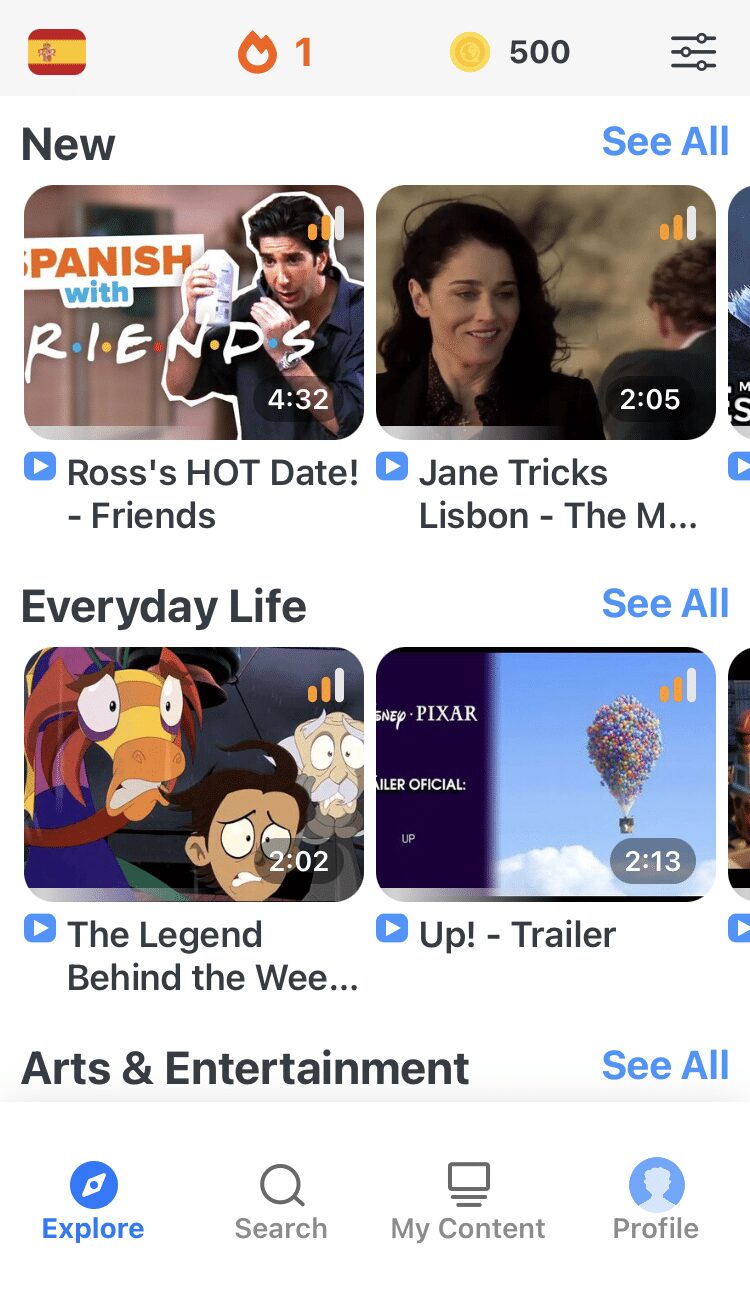
FluentU really takes the grunt work out of learning languages, leaving you with nothing but engaging, effective and efficient learning. It’s already hand-picked the best videos for you and organized them by level and topic. All you have to do is choose any video that strikes your fancy to get started!
Each word in the interactive captions comes with a definition, audio, image, example sentences and more.
Access a complete interactive transcript of every video under the Dialogue tab, and easily review words and phrases from the video under Vocab.
You can use FluentU’s unique adaptive quizzes to learn the vocabulary and phrases from the video through fun questions and exercises. Just swipe left or right to see more examples of the word you're studying.
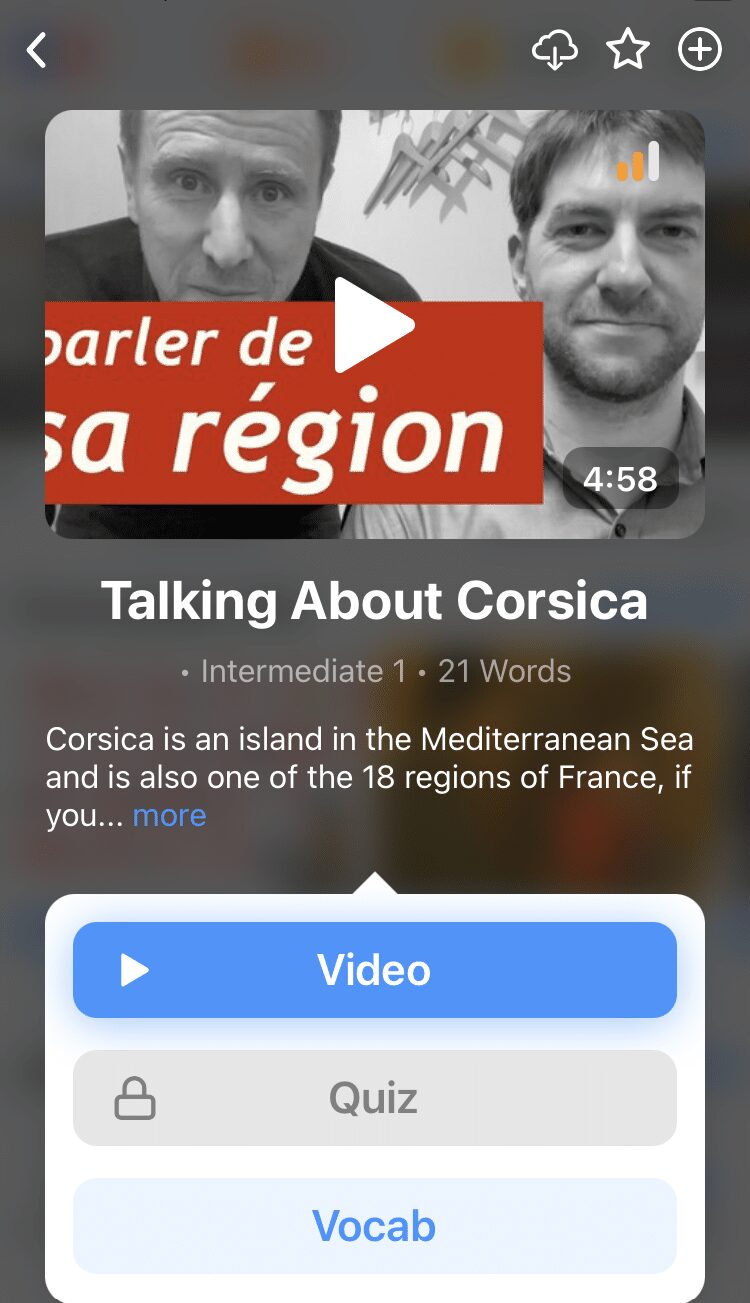
The program even keeps track of what you’re learning and tells you exactly when it’s time for review, giving you a 100% personalized experience.
Start using the FluentU website on your computer or tablet or, better yet, download the FluentU app from the iTunes or Google Play store. Click here to take advantage of our current sale! (Expires at the end of this month.)
The Verdict: Is LinguaLift Worth It?
I recommend LinguaLift as a beginner resource. The content is high quality with native audio, teaches writing systems well, and has fun and effective learning tools and revision capabilities.
Otherwise, I would pass on LinguaLift to find a more well-rounded program. Its content for beginners is great, but anything after that is lacking. As for its claims that it’s a “complete language learning program,” I wouldn’t use the word “complete” considering the shortcomings mentioned above.
Overall, it’s excellent for beginners, but you’ll need to supplement it with another resource or two to make the most out of your studies. And have something else lined up for when you reach the intermediate level.

